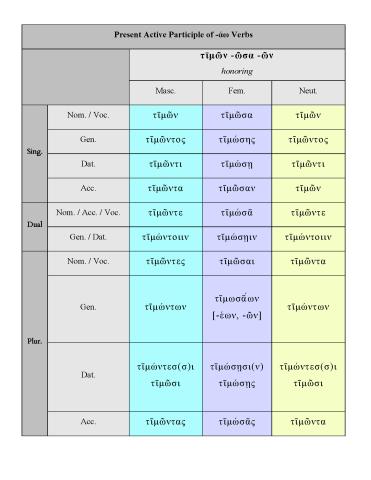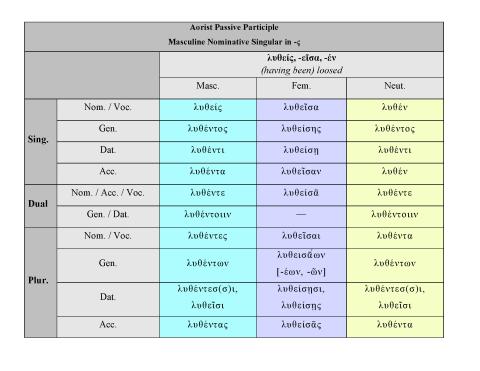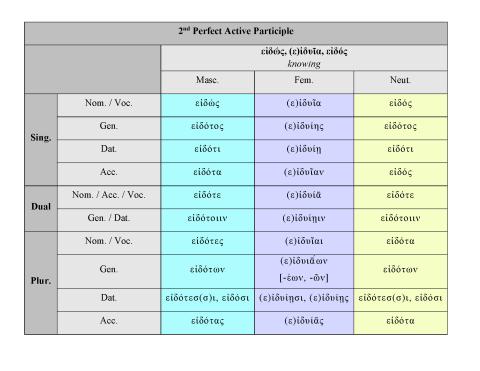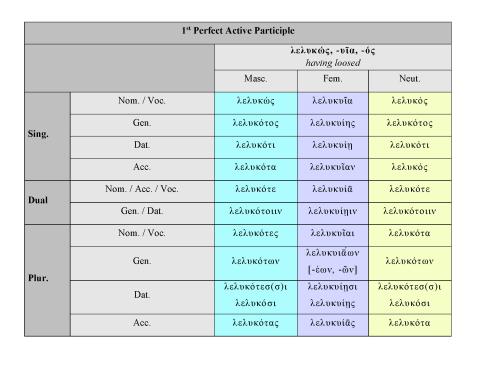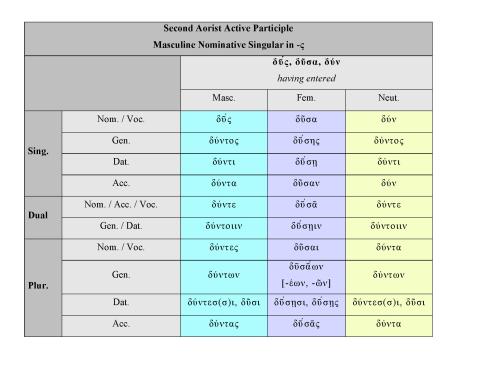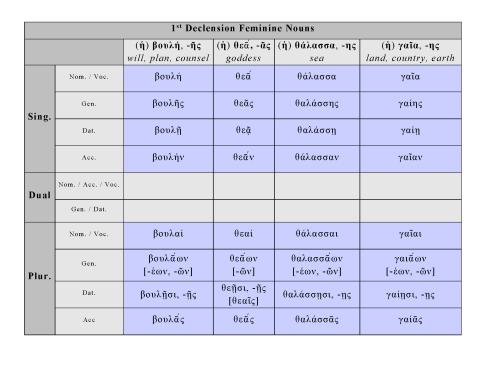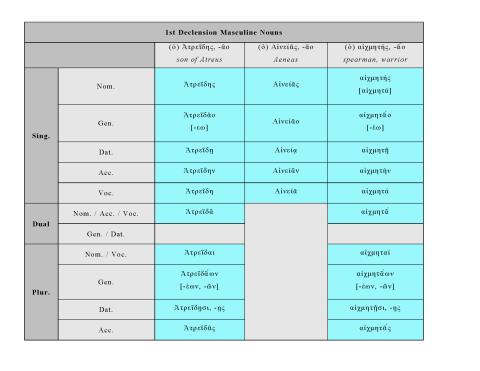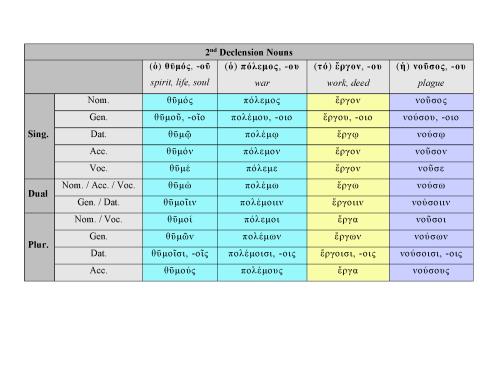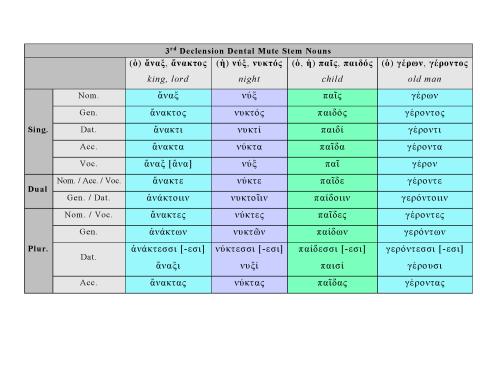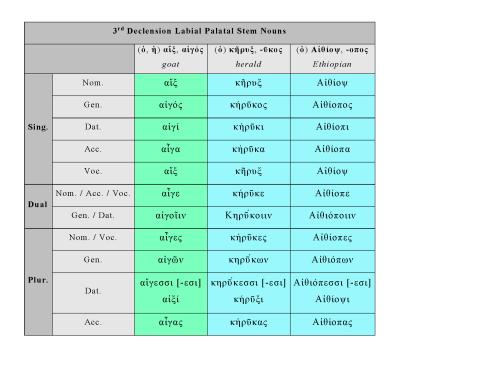Homeric Participles: present active -άω verbs
Annotations
Seth Levin and Meagan Ayer created these charts based on Clyde Pharr's Homeric Greek: A Book for Beginners (Boston: D.C. Heath, 1920). Since they have a pedagogical rather than descriptive-grammatical purpose, they sometimes include, to complete a paradigm, forms that do not in fact occur in Homeric Greek. Lemma searches in Perseus under Philologic can clarfy what forms are actually found in the Homeric poems (and how commonly).

